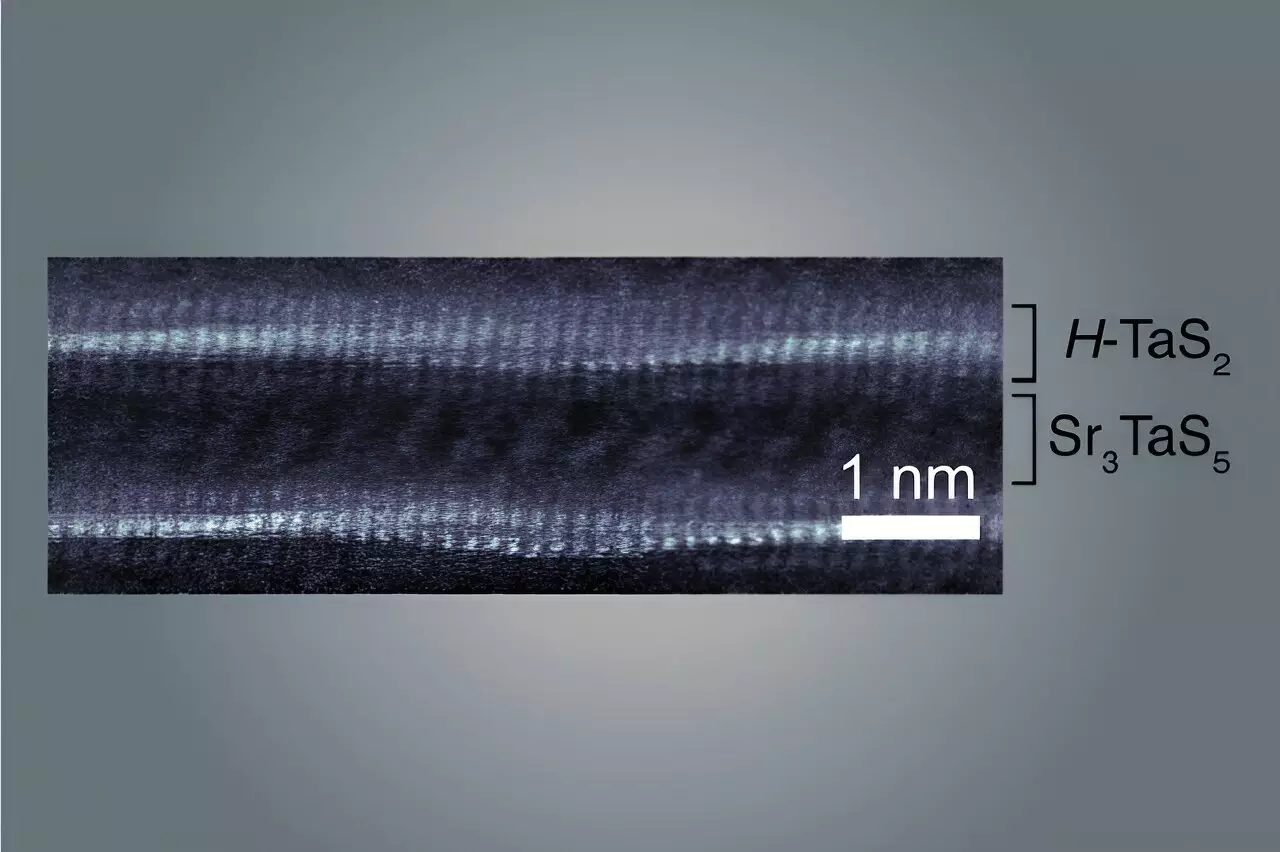In a significant advancement within the field of material science, physicists from the Massachusetts Institute of Technology (MIT) and their collaborators have synthesized a groundbreaking material characterized by unique superconducting and metallic properties. This new material is distinguished by its layering of atoms, which are merely billionths of a meter thick, forming intricate, wavy structures. Unlike previous materials that are often minuscule and challenging to handle, the remarkable aspect of this discovery is the ability to create sizable samples that can be manipulated by hand, facilitating a more in-depth exploration of their quantum characteristics.
This large-scale production is not just a matter of size; it holds paramount importance in understanding the fundamental interactions at play within these materials. The research, published in the prestigious journal Nature, highlights not only the innovative approach of the scientists but also the confidence they have gained in the potential to design further materials that exhibit unconventional properties. The team’s use of rational design—leveraging their extensive knowledge of materials science and chemistry—has positioned them at the forefront of material synthesis innovation.
At the core of this material’s unique properties lies its atomic structure. The new compound is composed of alternating layers of tantalum and sulfur, stacked atop a “spacer” layer made of strontium, tantalum, and sulfur. This structure, reminiscent of a multi-layered cake, illustrates a meticulous atomic arrangement where the layers are continuously repeated over thousands of iterations.
The creation of these wavy atomic configurations can be attributed to discrepancies in the dimensions and arrangements of the crystal lattice in each layer. This mismatch causes one layer to flex, yielding a wavy structure akin to how a sheet of legal paper conforms to fit over a standard sheet of printer paper. The resulting waves are not just aesthetic but are crucial to the material’s electrical properties, influencing the flow of electrons through the structure.
The Quantum Phenomena Unveiled
The implications of the observed wavy structure extend beyond mere aesthetics and into the realm of quantum behavior. Upon reaching specific temperatures, this novel material can achieve superconductivity—a state where electrons are able to traverse the material without encountering any resistance. The presence of the wavy layers alters how these electrons behave, as their movement is influenced by the “imprint” of the structural modulations, resulting in areas of varying superconductivity strength.
Moreover, the unique metallic properties are enhanced by these atomic waves, as electrons face less resistance when flowing along the troughs of the waves compared to moving against the ridges. This directional flow allows for improved efficiency, as the electrons can effectively be directed to flow preferentially in certain pathways, thus optimizing the material’s performance in applications that depend on efficient electron transport.
The findings of this research are not just a technical achievement; they signify a step into unexplored territory for material science. By establishing a new family of materials with dimensions and behaviors that challenge existing paradigms, the MIT team has opened doors for further exploration and potential applications. The ability to control the interactions at the atomic level and the predictability of the outcomes presents vast opportunities for developing materials suited for practical applications in electronics, energy storage, and quantum computing.
Aravind Devarakonda, one of the leading researchers on the project and now an assistant professor at Columbia University, pointedly remarked on the excitement generated by the unforeseen results of this exploratory venture. Indeed, with the groundwork laid by the MIT researchers, other scientists are now encouraged to investigate the myriad possibilities these new materials present.
The Path Forward
The creation of this wavy atomic material not only challenges traditional notions of crystal structures but also reinforces the significance of rational design in material synthesis. The researchers at MIT are poised to continue their innovative work, armed with a better understanding of how to manipulate atomic interactions to engineer materials with desired properties. As they advance further into this uncharted territory, the surprises and applications borne from this research hold the promise of transforming the fields of physics, materials science, and engineering, heralding a new era of technological advancement. The excitement surrounding these developments certainly paves the way for a future rich with innovative breakthroughs.


Leave a Reply